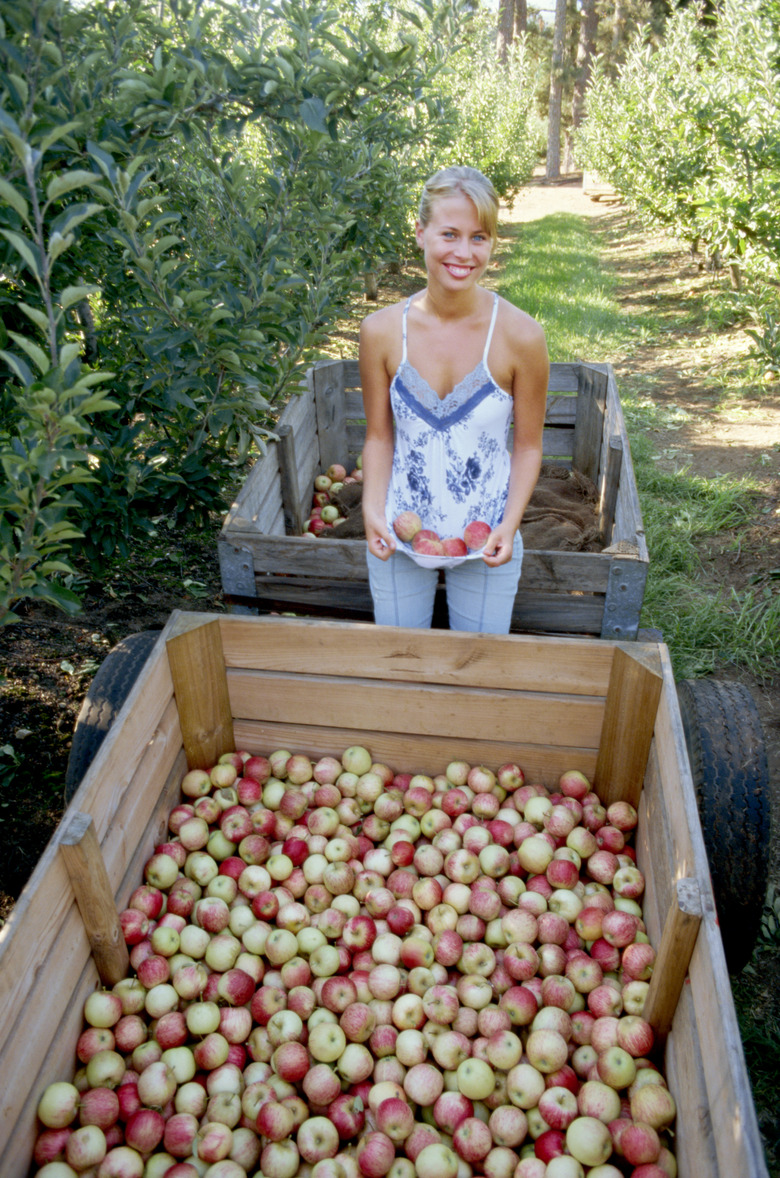What Causes Black Spots On The Apples Of My Trees?
Apple trees are a treat in a home orchard, but they are susceptible to a variety of diseases. A common symptom of apple disease is the appearance of black spots on the fruit. The spots may be large or small, blotchy or circular. Examine them carefully for identification for proper treatment. Both cultural controls and fungicides treat diseases such as scab, rot, blotch and flyspeck.
Apple Scab
Apple scab appears as gray-brown or black spots on the apple's flesh. It also causes deformed fruit, cracking of the skin and velvety lesions on the leaves. It usually appears early in the growing season. Planting scab-resistant varieties and pruning trees so that there is good air circulation helps prevent scab. Applying a 5 percent solution of urea prevents bacteria from forming on dead leaves in the fall. Applying a fungicide such as immunox, captan or Systemic Fungicide 3336 WP 50% treats scab.
Rot Diseases
Black rot, white rot and bitter rot are all treated the same way and have similar symptoms with a few differences. Black rot appears as firm, red-ringed black spots on the fruit, sometimes with concentric black or brown rings. Tiny black specks may appear on the fruit's skin. Bitter rot also produces red-ringed spots, but they may be lighter in color and sunken. Bitter rot often infects the top of the fruit and spreads inward toward its core. White rot appears similarly with dark, red-ringed spots. It eventually splits the fruit open so that you can see watery, tan decay. Control these rot diseases culturally by burning any piles of leaves left in the orchard in fall. Remove any mummified apples left on the tree as well as infected shoots and wood. Captan fungicide is effective against fruit rots.
Blotch Diseases
Identify blotch by shiny, irregular, blackish blotches on the fruit's surface. Sooty blotch has a similar shape, but appears sooty rather than shiny. Prune trees in both winter and summer to allow air circulation and water your apple trees at the ground as blotch thrives on wet, humid leaves. Thin the fruits so that they are not touching. Treat blotch with captan.
Flyspeck
Flyspeck sometimes accompanies sooty blotch and appears as shiny, black specks on the apple's surface. The dots grow, but usually not longer than one inch across. Pruning to let in air and light and thinning out any clusters of apples can help reduce the prevalence of this disease. Captan treats flyspeck.
